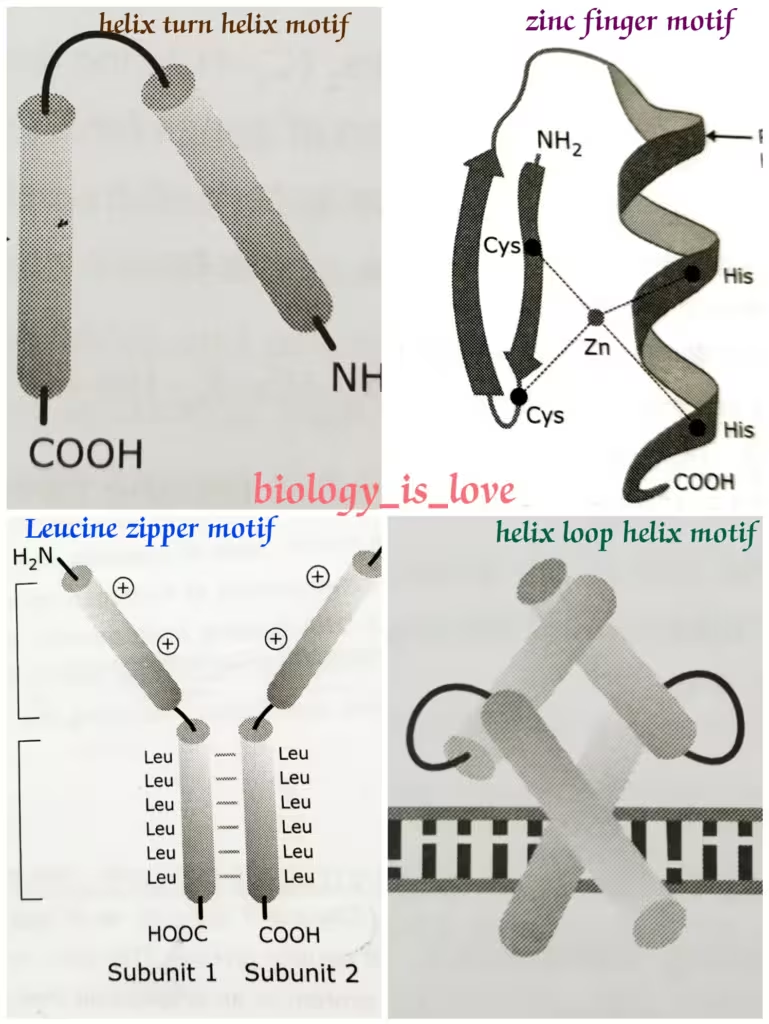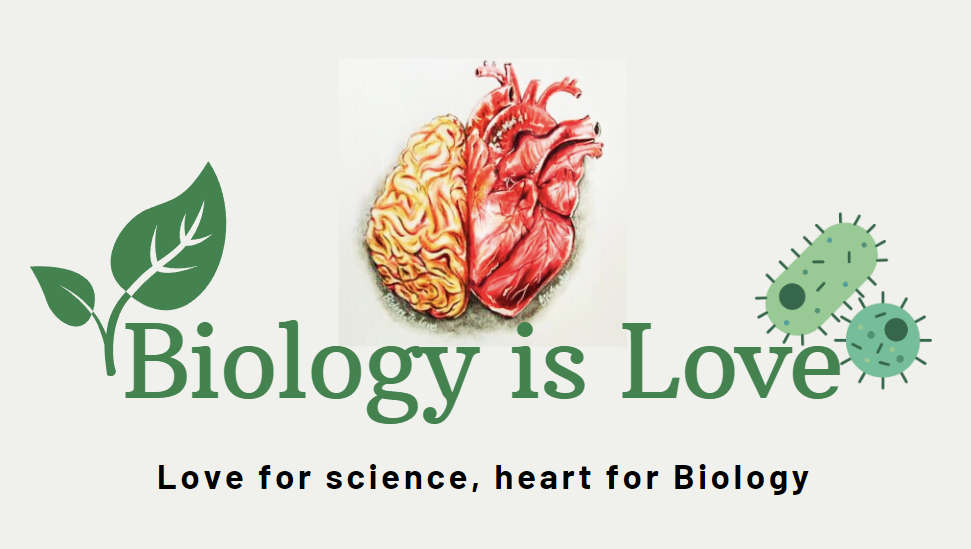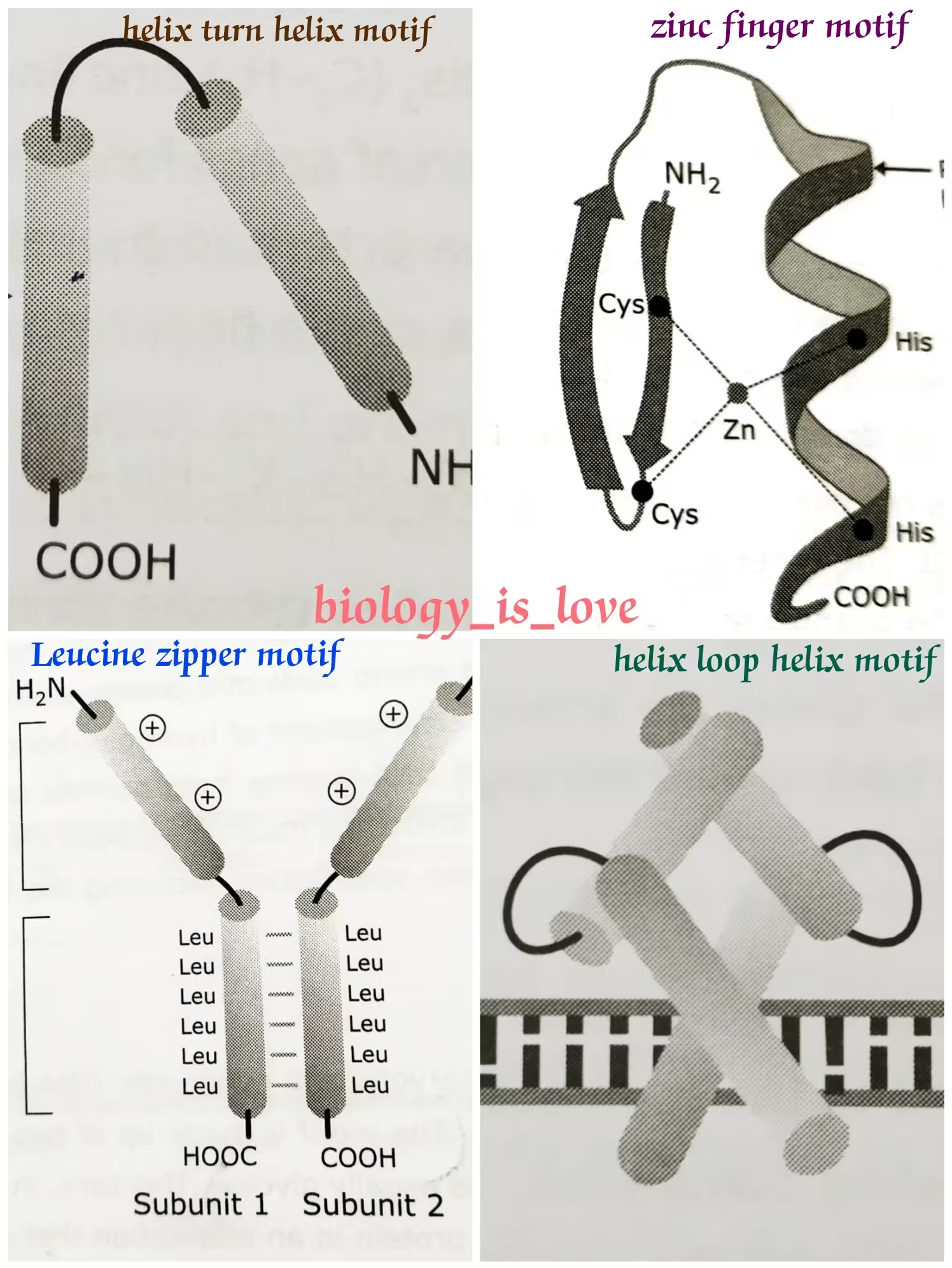Table of Contents
DNA binding motifs- DNA binding proteins such as transcription factors identify and bind a short nucleotide sequence, usually as a result of extensive complementarity between the surface of the protein and surface features of the double helix in the region of the binding.
The process by which DNA-binding motifs can build sequence-specific contacts to a double-stranded DNA molecule without breaking the hydrogen bonds that holds the bases together:
- Contacts occur between the DNA-binding proteins and the edges of the base pairs that are exposed in the grooves of the DNA, especially the major grooves.
- Hydrogen bonds provide sequence-specific contacts.
- The amino acid of a protein make specific hydrogen bonds with exposed atoms on the sides of the base pairs.
- The arrangements of hydrogen bond donors and acceptors of a T-A base pair is different from the G-C base pair.
Types:
A DNA binding motif permits specific binding of a DNA binding protein to its target sequence. Several conserved structural motifs have been recognized which are common to many different DNA binding proteins with quite different specificities. These are helix-turn-helix, helix-loop-helix, leucine zipper and zinc finger motifs.
The diagrammatic representation of the types of DNA binding motifs:

Other related notes:
- helix-turn-helix: https://thebiologyislove.com/helix-turn-helix-motif/
- helix-loop-helix: https://thebiologyislove.com/helix-loop-helix-motif/
- leucine zipper motif: https://thebiologyislove.com/leucine-zipper-motif/
- zinc finger motif: https://thebiologyislove.com/zinc-finger-motif-c2-h2/
Facebook link: https://www.facebook.com/share/p/4VPccvCr4qa7mNRv/?mibextid=oFDknk
Instagram Link: https://www.instagram.com/reel/C8jeu19RCv7/?igsh=bnhyMm13MmY5b2Q1

